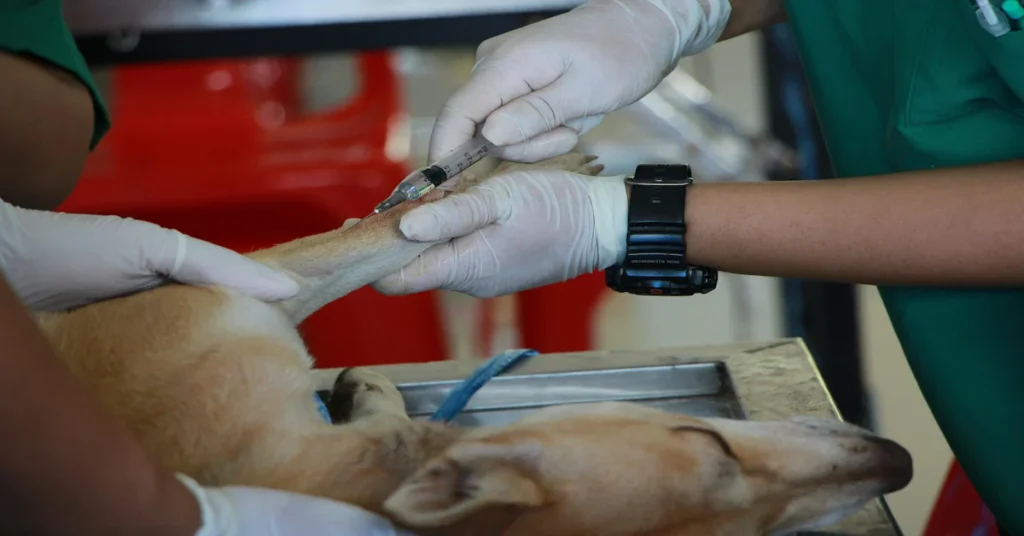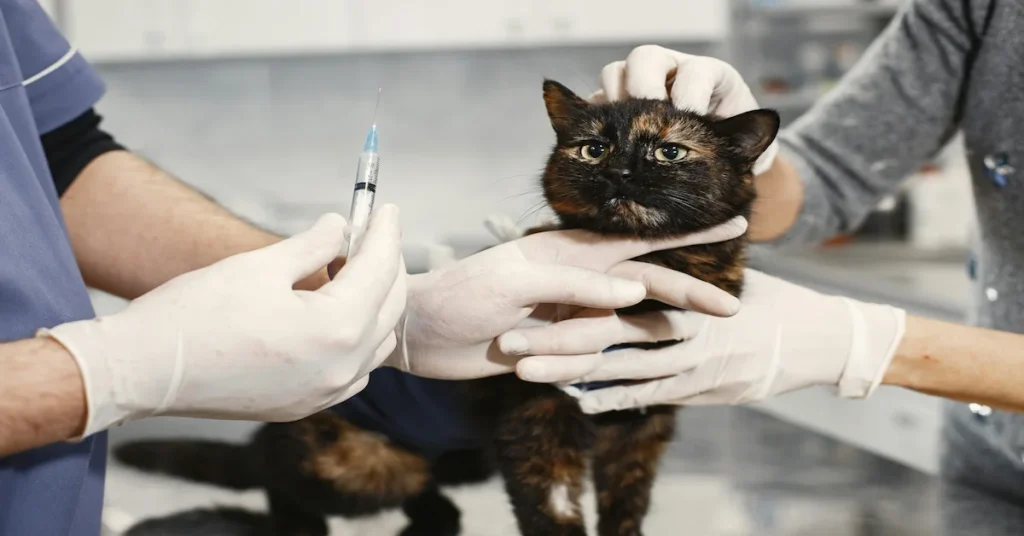Vaccinations are the cornerstone of preventive veterinary medicine. As we progress into 2025, ensuring your pet receives timely and appropriate vaccinations has never been more important. With shifting global climates, urbanization, and increased pet travel, many infectious diseases are spreading into new territories. Diseases that were once rare in certain parts of the world are now more common, posing a threat not only to unvaccinated pets but also to other animals and humans.
Pet vaccines are scientifically proven tools that protect against serious, often fatal illnesses. They are critical to extending the life of pets and safeguarding communities from the outbreak of zoonotic diseases. Whether you are a first-time pet owner or an experienced animal lover, this guide will help you understand the essential vaccinations every pet should receive in 2025.
Why Vaccinations Are Crucial in 2025
In recent years, veterinary science has made great strides in creating safer and more effective vaccines. However, the rise of vaccine hesitancy, misinformation, and new emerging pathogens continues to threaten pet health. According to the American Veterinary Medical Association (AVMA), vaccines are among the most effective ways to prevent disease and minimize outbreaks.
In 2025, core vaccinations are strongly recommended due to the following:
- Global disease outbreaks: Rising temperatures and travel have expanded the reach of pathogens.
- Reemergence of old diseases: Illnesses once under control, such as canine parvovirus, are resurging in some regions.
- Zoonotic concerns: Some diseases, like rabies and leptospirosis, can infect humans.
- Legal and boarding requirements: Many areas require up-to-date vaccines for licensing, travel, or boarding facilities.
Core Vaccines for Dogs in 2025

The core vaccines for dogs are recommended for every canine regardless of age, breed, or environment. These vaccines protect against highly contagious and potentially deadly diseases.
1. Rabies Vaccine
Rabies is a fatal viral disease that attacks the nervous system. It is spread through the bite or saliva of infected animals. Although rare in vaccinated populations, rabies still kills thousands of people and animals globally every year.
- 2025 Update: New three-year rabies vaccines are widely available, offering long-term protection.
- When to Administer: First dose at 12–16 weeks of age, followed by boosters every 1 to 3 years, depending on local laws.
2. DHPP Vaccine (Distemper, Hepatitis, Parvovirus, Parainfluenza)
This is a combination vaccine that protects against four highly contagious viral diseases.
- Canine Distemper: A serious disease affecting the respiratory, gastrointestinal, and nervous systems.
- Hepatitis (Adenovirus Type 2): Affects the liver, kidneys, and eyes.
- Parvovirus: A deadly virus especially dangerous for puppies.
- Parainfluenza: One of the causes of kennel cough.
- When to Administer: First given at 6–8 weeks of age, then every 3–4 weeks until 16 weeks, with boosters at one year and every 1–3 years thereafter.
3. Leptospirosis
A bacterial infection spread through contaminated water, urine, or soil. It can lead to kidney and liver damage in dogs and is transmissible to humans.
- 2025 Concern: Increased flooding and warm weather have led to more frequent outbreaks.
- When to Administer: Usually included with DHPP as DHLPP. Annual booster required.
Non-Core Dog Vaccines (Based on Risk)
1. Bordetella bronchiseptica (Kennel Cough)
Commonly required for dogs attending daycare, dog parks, grooming, or boarding.
2. Canine Influenza (Dog Flu)
Recent outbreaks across North America have made this vaccine more important than ever.
3. Lyme Disease
Transmitted by ticks. Recommended if you live in or travel to areas with high tick populations.
Core Vaccines for Cats in 2025

Cats, whether indoor or outdoor, are also at risk for serious infectious diseases. The following are the core feline vaccinations:
1. Rabies
Equally important for cats as for dogs. Many jurisdictions legally require this vaccine.
- When to Administer: 12–16 weeks, then every 1–3 years based on product and laws.
2. FVRCP Vaccine (Feline Viral Rhinotracheitis, Calicivirus, Panleukopenia)
A combination vaccine considered essential for all cats.
- Feline Viral Rhinotracheitis: Causes respiratory infections.
- Calicivirus: Leads to oral ulcers and upper respiratory symptoms.
- Panleukopenia (Feline Distemper): A highly contagious and often fatal virus.
- When to Administer: Start at 6–8 weeks of age, followed by boosters every 3–4 weeks until 16 weeks, then annually or every 3 years.
3. Feline Leukemia Virus (FeLV)
Recommended for kittens and cats that go outdoors or live in multi-cat households.
- When to Administer: Initial vaccine series followed by annual boosters if at risk.
Vaccination Needs for Other Pets
Rabbits
- Myxomatosis
- Rabbit Hemorrhagic Disease Virus (RHDV1 and RHDV2)
Outbreaks in 2023–2024 have made RHDV a significant threat to rabbits in many parts of the world.
Ferrets
- Canine Distemper
- Rabies
These are essential for ferrets living in or near areas with known outbreaks.
Guinea Pigs, Hamsters, and Reptiles
Generally do not require vaccines, but they do need regular checkups to ensure health. Consult with an exotic pet veterinarian for tailored care plans.
General 2025 Vaccination Schedule Overview
| Pet | Vaccine | Initial Dose | Booster Frequency |
|---|---|---|---|
| Dog | Rabies | 12–16 weeks | Every 1–3 years |
| Dog | DHPP | 6–8 weeks | Every 3–4 weeks until 16 weeks |
| Dog | Leptospirosis | 12 weeks+ | Annually |
| Cat | Rabies | 12–16 weeks | Every 1–3 years |
| Cat | FVRCP | 6–8 weeks | Every 3–4 weeks until 16 weeks |
| Cat | FeLV | 8–12 weeks | Annually if at risk |
| Rabbit | RHDV + Myxomatosis | 4–10 weeks | Annually |
| Ferret | Rabies + Distemper | 12–14 weeks | Annually |
How to Stay On Track With Vaccinations
- Keep a digital or physical record of your pet’s vaccine history.
- Set reminders for upcoming booster shots.
- Ensure new pets or rescues are evaluated and vaccinated promptly.
- Avoid vaccinating sick or immunocompromised pets without veterinary clearance.
Potential Side Effects of Pet Vaccines
While most pets tolerate vaccines very well, some may experience mild side effects like:
- Temporary soreness at injection site
- Lethargy
- Mild fever
Serious reactions are rare but should be reported to your vet immediately. These include facial swelling, vomiting, difficulty breathing, or collapse.
Conclusion
Vaccinating your pet is an act of love and responsibility. It is not just about protecting your own animal, but also about contributing to public health and animal welfare. In 2025, as veterinary medicine adapts to emerging threats, staying informed and proactive is essential. From rabies and parvovirus to newer threats like RHDV and canine influenza, updated vaccinations are more than just routine they’re lifesaving.
Consult with your veterinarian, maintain regular health checks, and ensure every shot is administered on schedule. Your pet’s life may depend on it.
Frequently Asked Questions (FAQs)
1. Why are pet vaccinations important in 2025?
Pet vaccinations in 2025 are more important than ever due to the rise of new infectious diseases, climate change, and increased pet travel. Vaccines protect your dog or cat from potentially fatal illnesses and prevent the spread of zoonotic diseases to humans.
2. What are the core vaccinations every dog must receive?
Core vaccinations for dogs include Rabies, DHPP (Distemper, Hepatitis, Parvovirus, and Parainfluenza), and Leptospirosis. These vaccines are critical for preventing life-threatening conditions and are often legally required.
3. What vaccines are essential for cats in 2025?
Essential cat vaccines include Rabies, FVRCP (Feline Viral Rhinotracheitis, Calicivirus, and Panleukopenia), and FeLV (Feline Leukemia Virus) for at-risk cats. These vaccines protect against deadly viruses and are strongly recommended by veterinarians.
4. Do indoor pets need vaccinations too?
Yes, even indoor pets need vaccinations. Airborne viruses, contact with humans who’ve been outdoors, or emergency visits to the vet can expose them to diseases. Rabies vaccination is also legally required in many areas, regardless of indoor status.
5. How often should pet vaccinations be updated?
Most core vaccinations begin at 6–8 weeks of age and require boosters every 3–4 weeks until 16 weeks. Adult pets typically need booster shots every 1–3 years depending on the vaccine and local regulations. Always consult your veterinarian for a personalized schedule.
6. Are there any side effects of pet vaccines?
Most pets experience no or only mild side effects such as slight swelling at the injection site, fatigue, or mild fever. Severe allergic reactions are rare but require immediate veterinary attention. Always monitor your pet after vaccination.
7. Can I skip certain vaccinations for my pet?
Skipping core vaccinations is not recommended as it puts your pet at serious risk. Some non-core vaccines may be optional based on your pet’s lifestyle and location, but all core vaccines are essential for long-term health and disease prevention.
8. What happens if my pet misses a booster dose?
If a booster dose is missed, your veterinarian may recommend restarting the vaccination series to ensure full immunity. Timely vaccinations are critical for keeping your pet protected year-round.
9. Are newer vaccines in 2025 safer than older ones?
Yes, veterinary medicine has advanced significantly. Vaccines in 2025 are developed using improved technology for enhanced safety, longer-lasting immunity, and fewer side effects, especially in puppies, kittens, and senior pets.
10. Where can I find reliable vaccination guidelines for pets?
You can find trusted vaccination guidelines from organizations like the American Veterinary Medical Association (AVMA), World Small Animal Veterinary Association (WSAVA), and your local veterinarian clinic.